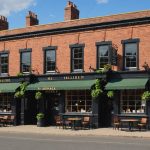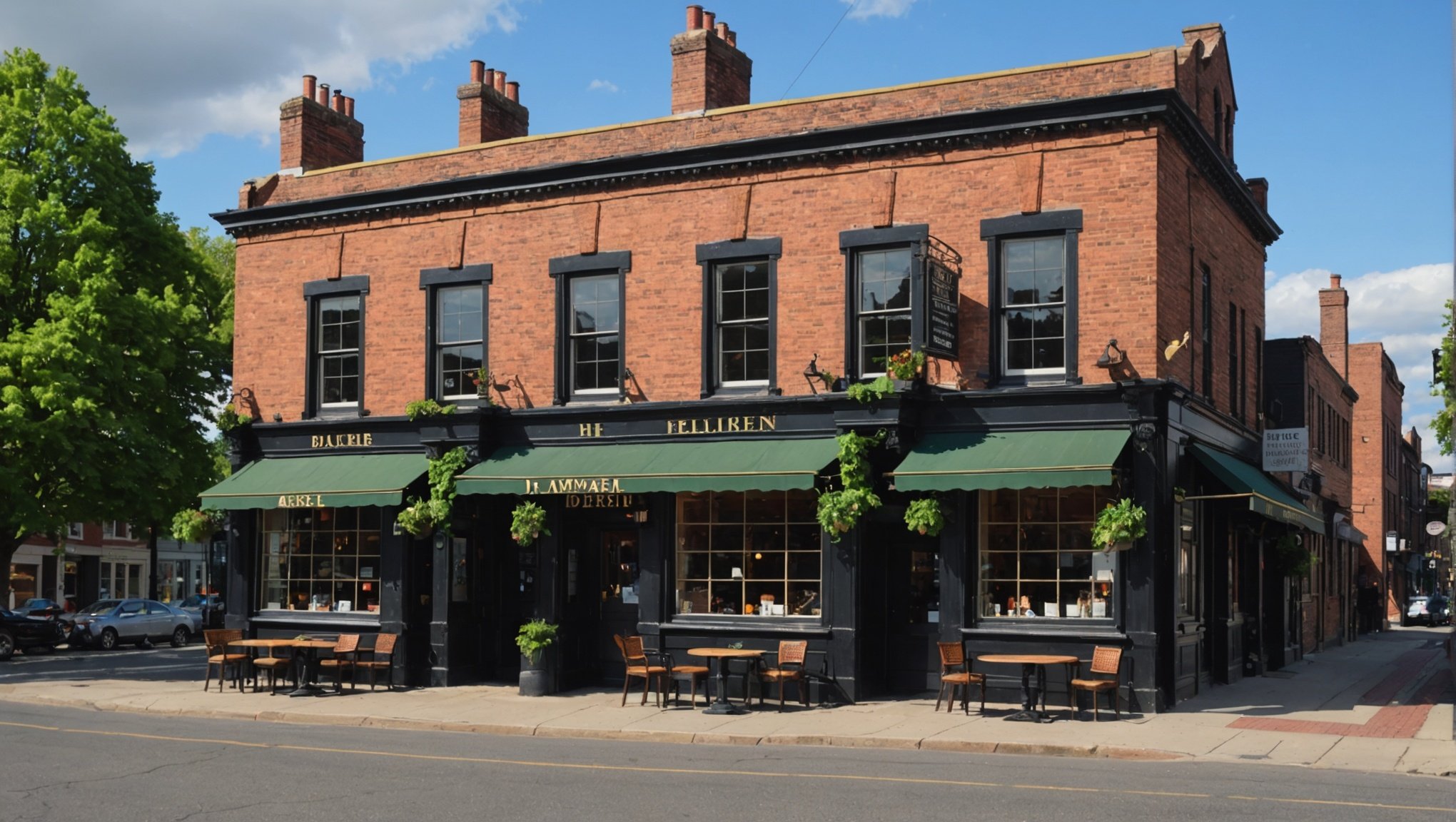Revamping Tradition: A Guide to Modernizing Historic Pubs While Preserving Their Unique Charm
Understanding the Importance of Historic Pubs
Historic pubs are more than just places to grab a drink; they are vibrant hubs of community life, rich in cultural heritage and historical significance. These establishments often serve as the heart of a village or town, providing a space for social interaction, storytelling, and the preservation of local traditions. However, in today’s fast-paced world, many of these historic pubs face the challenge of adapting to modern times while retaining their unique charm.
The Balance Between Modernization and Preservation
When it comes to modernizing a historic pub, the key is to strike a delicate balance between preserving the heritage of the building and incorporating modern amenities that appeal to contemporary patrons. For instance, the redevelopment plans for Brisbane’s oldest pub, the Victory Hotel, illustrate this balance perfectly. The proposal includes a sports bar, beer garden, rooftop garden bar, steakhouse, and a speakeasy-style bar with a gambling room, all while preserving the 19th-century style and feel of the historic building.
Also to read : Transforming Your Bar Layout: Essential Tips for Hosting Large Event Nights
Preserving Heritage Elements
Heritage architect Ruth Woods emphasized the importance of preserving the historic features of the Victory Hotel: “The project brings the features of the historic building back into focus while updating the facilities to service the more sophisticated requirements of patrons in the 21st century. The new works reflect a modern interpretation of the original form and materiality of the 19th-century hotel”.
Regulatory Considerations
Modernizing a historic pub often involves navigating complex regulations designed to protect the building’s heritage. These regulations can vary significantly depending on the location and the grade listing of the building.
Also to discover : Boost Your Bar”s Nightly Earnings: The Transformative Power of Live Music
Grade Listed Buildings
For example, in the UK, pubs that are grade listed must adhere to strict preservation guidelines. This means that any renovations or developments must be approved by local authorities to ensure that the historic integrity of the building is maintained. Here is a brief overview of what this entails:
- Grade I: Buildings of exceptional interest, sometimes considered to be internationally important; only 2.5% of listed buildings are Grade I.
- Grade II: Buildings that are of special interest, warranting every effort to preserve them; 92% of all listed buildings are Grade II.
- Grade II: Buildings that are particularly important and of more than special interest; 5.5% of listed buildings are Grade II.
Community Engagement and Feedback
Community engagement is crucial when modernizing a historic pub. The public should have the opportunity to provide feedback and objections to any proposed changes. For the Victory Hotel redevelopment, residents can submit objections to the Brisbane City Council until a specified deadline, ensuring that the community’s voice is heard.
Example: Publick House Renovation
The Publick House in Columbia, South Carolina, provides a compelling example of community engagement. After an extensive renovation, the pub aimed to become more welcoming to women and families. General Manager Matt Catchpole noted, “Get women and families back was the big thing. We had retained a crowd of people that were pretty loyal regulars, but we had inadvertently sort of eroded the breadth of our base.” This approach helped in revitalizing the pub’s appeal to a broader audience.
Economic Benefits and Sustainable Tourism
Modernizing historic pubs can have significant economic benefits, particularly in terms of tourism. By preserving the cultural heritage of these establishments, they can attract visitors from around the world, contributing to local economic growth.
Tourism Hospitality
Rory O’Brien from Precision Group, the company behind the Victory Hotel redevelopment, highlighted the economic impact: “We’re excited to elevate the offerings of this iconic venue and reinvigorate this corner of Brisbane. Our focus is on creating a world-class destination that will attract visitors from across Australia and around the world, while preserving the heritage of the site”.
Enhancing the Pub Experience
To attract a new generation of patrons while retaining loyal regulars, historic pubs need to enhance their offerings without compromising their unique charm.
Food and Drink Innovations
- Locally Sourced Food: Incorporating locally sourced ingredients into the menu can enhance the pub’s appeal. For instance, Publick House in Columbia introduced homemade corned beef and other local specialties to their menu, which has been well-received by patrons.
- Craft Beers and Cocktails: Adding a selection of craft beers and cocktails can cater to the diverse tastes of modern drinkers. Publick House installed a top-of-the-line beer cooler with 18 taps to keep each brew at the optimal temperature.
- Live Music and Entertainment: Live music and other forms of entertainment can make the pub a vibrant social hub. For example, some pubs in London are focusing on entertainment and a wider range of beers to attract a broader audience.
Bar Area and Ambiance
- Beer Garden: A well-designed beer garden can be a significant draw, especially during warmer months. The Victory Hotel’s proposal includes a rooftop beer garden, which will provide patrons with a unique outdoor space.
- Interior Design: Updating the interior design while maintaining the historic feel is crucial. Publick House lightened the previously dark barroom walls with gray paint and added a jovial whale-and-diver mural, making the space more welcoming.
Practical Insights and Actionable Advice
Here are some practical tips for modernizing a historic pub:
Community Involvement
- Engage with Local Residents: Hold community meetings and gather feedback to ensure that the changes align with the community’s vision.
- Preserve Historic Elements: Work closely with heritage architects to preserve the original features of the building.
Menu and Beverage Innovations
- Introduce Local Specialties: Incorporate locally sourced ingredients and traditional dishes to maintain the pub’s cultural heritage.
- Offer Craft Beers and Cocktails: Expand the beverage menu to include craft beers and unique cocktails.
Enhance Ambiance
- Update Interior Design: Modernize the interior while retaining the historic charm. Use lighting, decor, and other elements to create a welcoming atmosphere.
- Create Outdoor Spaces: Develop a beer garden or other outdoor areas to provide patrons with additional spaces to enjoy.
Case Study: The Victory Hotel Redevelopment
The redevelopment of the Victory Hotel in Brisbane serves as an exemplary case study for modernizing a historic pub.
| Feature | Original | Proposed |
|---|---|---|
| Building Style | 19th-century | Modern interpretation of 19th-century style |
| Bar Areas | Single bar | Sports bar, beer garden, rooftop garden bar, steakhouse, speakeasy-style bar |
| Food Offerings | Limited menu | Expanded menu including steakhouse and speakeasy-style bar with food |
| Community Engagement | Limited | Public feedback and objections accepted until October 10 |
| Heritage Preservation | Heritage listed | Preservation of historic features under the guidance of heritage architects |
Modernizing historic pubs is a delicate but rewarding process. By balancing preservation with innovation, these iconic establishments can continue to thrive, providing economic benefits and cultural enrichment to their communities. As Michael Dixon from Athena Hospitality Group noted, “While respecting the heritage and history of the Victory Hotel, we are creating an amazing venue that tells a story over numerous levels”.
In the end, the goal is to ensure that these historic pubs remain vibrant and relevant for future generations, serving as both a home to the local community and a beacon of cultural heritage for visitors from around the world.






